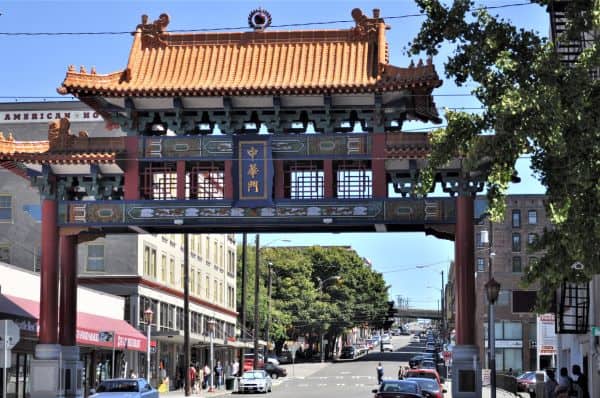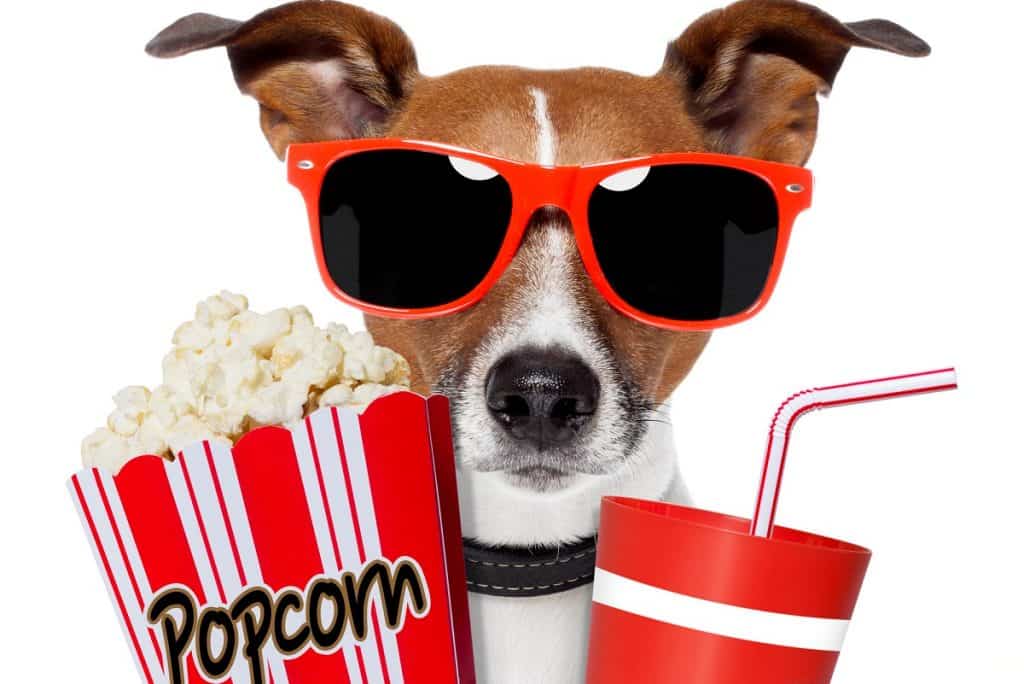The Seattle Chinatown-International District (aka the “ID”, pronounced eye-dee), located south of downtown is a cultural hub of the Asian American community. Historically, it is the only area in the continental United States where several cultures—Chinese, Japanese, Filipinos, African Americans, and Vietnamese—settled together and built one neighborhood.
Short history of the Seattle Chinatown-International District
In 1910, Seattle re-graded some hills and filled in the muddy flats along the waterfront. Buildings were erected on this land and a new International District began to take shape south of Jackson along King Street. Chinese immigrants arrived in the area first and established a neighborhood. Of course, the Chinese didn’t have much choice in where to live. Discriminatory covenants prevented Asians from living elsewhere in the city. Many immigrants became laborers who helped build the roads, railroads, and canals in or near Seattle, as well as work in other industries including lumber mills, canneries, farms, and coal mines. Some set up businesses: import-export operations, restaurants, laundries, hotels, and other commercial enterprises. In the beginning, Chinatown’s inhabitants were mostly men—single men as well as those supporting families back in China.
Japantown (“Nihonmachi“) originally sprang up north of Jackson along Main Street. However, the neighborhood vanished in 1942 when Executive Order 9066 forced Japanese residents into internment camps. Nihonmachi never returned to what it once was, but its history is still evident in the some of the historic businesses, such as the Panama Hotel Tea & Coffee House, NP Hotel, and Maneki Japanese Restaurant, along with newer businesses including the eclectic Momo shop, Kobo fine art gallery, Kaname Izakaya and Shochu Bar, and Fuji Sushi, among others.
Filipinos, were the third Asian group to arrive in Seattle in the late 1800s, arriving in several waves as the Philippines transformed from American territory in 1898 to full independence in 1946. Today, the Filipino American community is centered several miles south of the International District along Martin Luther King Jr Way S in southeast Seattle.
African Americans also settled in the International District along Jackson Street in the early part of the 20th Century, establishing many black-owned and -operated businesses and nightclubs. For many years, Seattle’s jazz scene on Jackson Street was the place to be. After World War II, housing discrimination and redlining forced Seattle’s black population eastward into what became known as the Central District, the area between 12th Avenue and Empire Way (later renamed Martin Luther King Way Jr).
In the 1960s and 1970s, the construction of the Interstate 5 freeway through the International District and building of the nearby Kingdome football stadium threatened the area’s survival. Young Chinese, Japanese, and Filipino student activists rallied under the banner of Asian American unity and led a fight to restore the area. They lobbied for low-income housing, set up bilingual social service programs, and formed a public corporation to preserve and renovate historic buildings. With public funds, hotels and streets were refurbished, new senior apartments were erected, and community-based service centers were established. College-educated Asian American professionals set up offices throughout the neighborhood, in locations formerly inhabited by their parents and grandparents.
In the 1980s, refugees from Vietnam arrived and set up businesses to the east, forming the “Little Saigon” neighborhood east of Interstate 5, around 12th Avenue and South Jackson Street. Continuing waves of immigrants from all over Asia have helped to keep the International District alive, along with the many people and organizations who are committed to the neighborhood’s welfare.
In the 1990s, the International District Station of the Downtown Seattle Transit Tunnel opened, and Union Station was restored as a regional transit hub.
In the first decade of the 21st Century, the Kingdome was demolished to make way for two new professional sports stadiums southwest of the International District. Nearby King Street train station was restored to its original stately elegance of the previous century. Other large scale development projects have continued throughout the ID. Many old buildings have been renovated and the streets and alleyways have been reclaimed for her resident’s enjoyment.

Seattle Chinatown Gate 2010 Photo by Joe Mabel – edited (CC3). The “historic” Chinatown Gate was built and dedicated in 2008.
Chinatown-International District events
Throughout the year, Chinatown International District comes alive for fairs, festivals, parades, night markets, and food walks. Most Seattle Chinatown events center around Hing Hay park. More info: Seattle’s Chinatown-International District (seattlechinatownid.com). Some of the major events are described below.
Lunar New Year festival in Seattle’s Chinatown
The years of the Chinese calendar follow a 12-year cycle. Each year is associated with one of 12 animal symbols in the Chinese zodiac. According to legend, the Jade Emperor invited the animals of his kingdom to enter a race through the countryside. The first 12 to finish the long race would each rule over one year every 12 years. The 12 animals are: rat, ox, tiger, rabbit (or cat in Vietnam), dragon, snake, horse, sheep, monkey, rooster, dog, and pig.
Lunar New Year in winter in Seattle’s Chinatown-International District is one of the largest Lunar New Year events in the region. Festivities include traditional dragon and lion dances, Japanese Taiko Drumming, martial arts demonstrations, arts & crafts, and a variety of family friendly activities. The lunar calendar follows the phases of the moon. Therefore, the date for Lunar New Year shifts each year, but occurs somewhere in the last ten days of January and the first twenty days of February. Find Lunar New Year celebrations around the Puget Sound region.
2024 Lunar New Year Celebration — Year of the Dragon! Dance performances and music will take place throughout the main stage at Hing Hay Park, vendor booths will line up along S King St., and foodies will have the opportunity to explore 40+ food walk destinations. More info: Lunar New Year Celebration | Seattle Chinatown-International District (seattlechinatownid.com) and Lunar New Year Celebration – Year of the Dragon | Facebook
Chinatown Seafair Parade in Seattle’s Chinatown-International District
Seattle Chinatown Seafair Parade in summer is a Seafair tradition. The family-friendly event features lion and dragon dances, the Seattle Chinese Girls Drill Team, and many more local community groups parading through the International District. More info: Chinatown Parade – Greater Seattle Chinese Chamber of Commerce.
Asian Food Walk in Seattle’s Chinatown-International District
Asian Food Walks are held throughout the year. During food walks, restaurants across the International District offer a variety of modestly priced “bites” featuring foods from China, Japan, Vietnam, Thailand, Cambodia, and other Asian countries.
- Lunar New Year Food Walk. $4-$8 Food Walk during the Lunar New Year celebration, alongside street vendors and live cultural performances.
- Summer Series Food Walk. Occurs on the third Saturdays of June, July, and August.
- Small Business Saturday Food Walk. Occurs on the last Saturday of November (right after Thanksgiving holiday).
- More info: C-ID Food Walk Series | Seattle Chinatown-International District (seattlechinatownid.com)
Chinatown JamFest street festival
All-ages summer evening in historic Canton and Maynard Alleys with live music, performances, games, and more.
For more info on any of the above events, visit our calendar below or Experience Seattle Chinatown ID (seattlechinatownid.com) and Seattle’s Chinatown-International District | Facebook
More festivals in the Puget Sound region
Listed below are all kinds of community festivals around the Puget Sound region.
But wait, there’s more!
- Find more Cultural heritage events in the Puget Sound region.
- Find more food festivals around the Puget Sound region.
- And here’s a list of 101+ always free things to do for fun.
- Find free and cheap things to do every day on the Greater Seattle on the Cheap event calendar.
- Visit the Greater Seattle on the Cheap home page and choose from a menu of free and cheap activities in the Puget Sound region.











